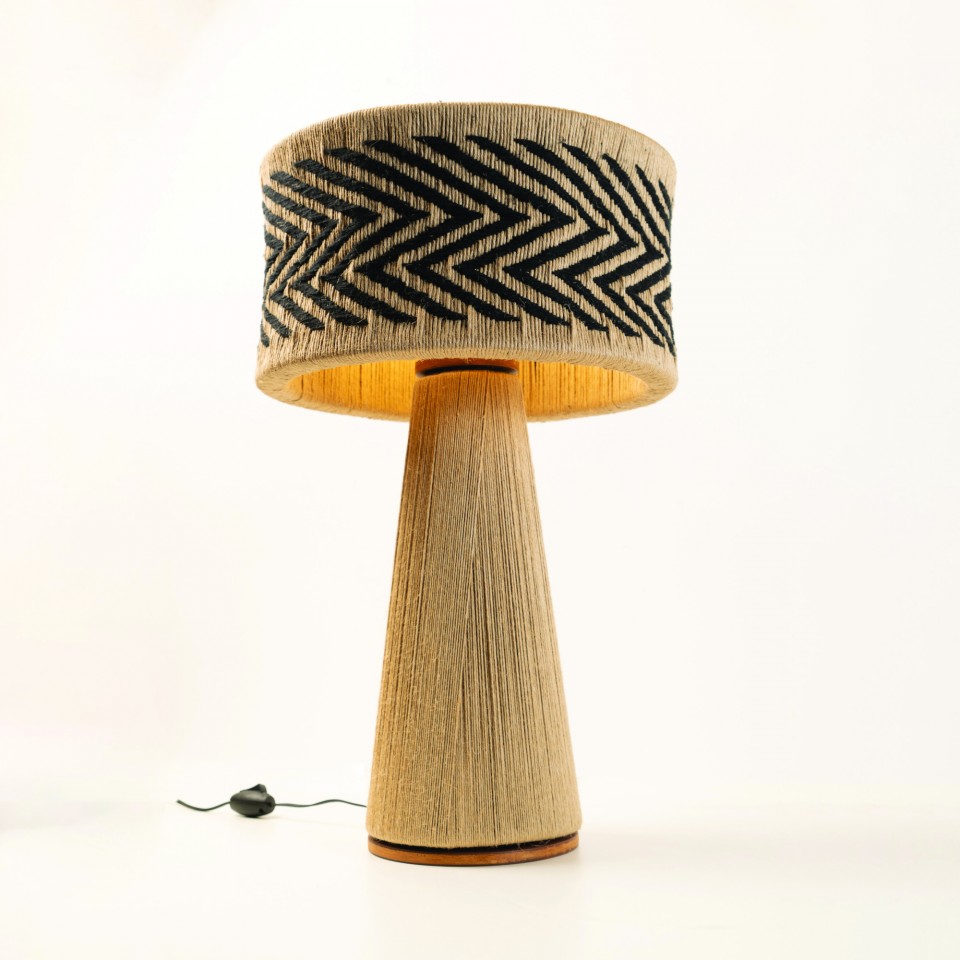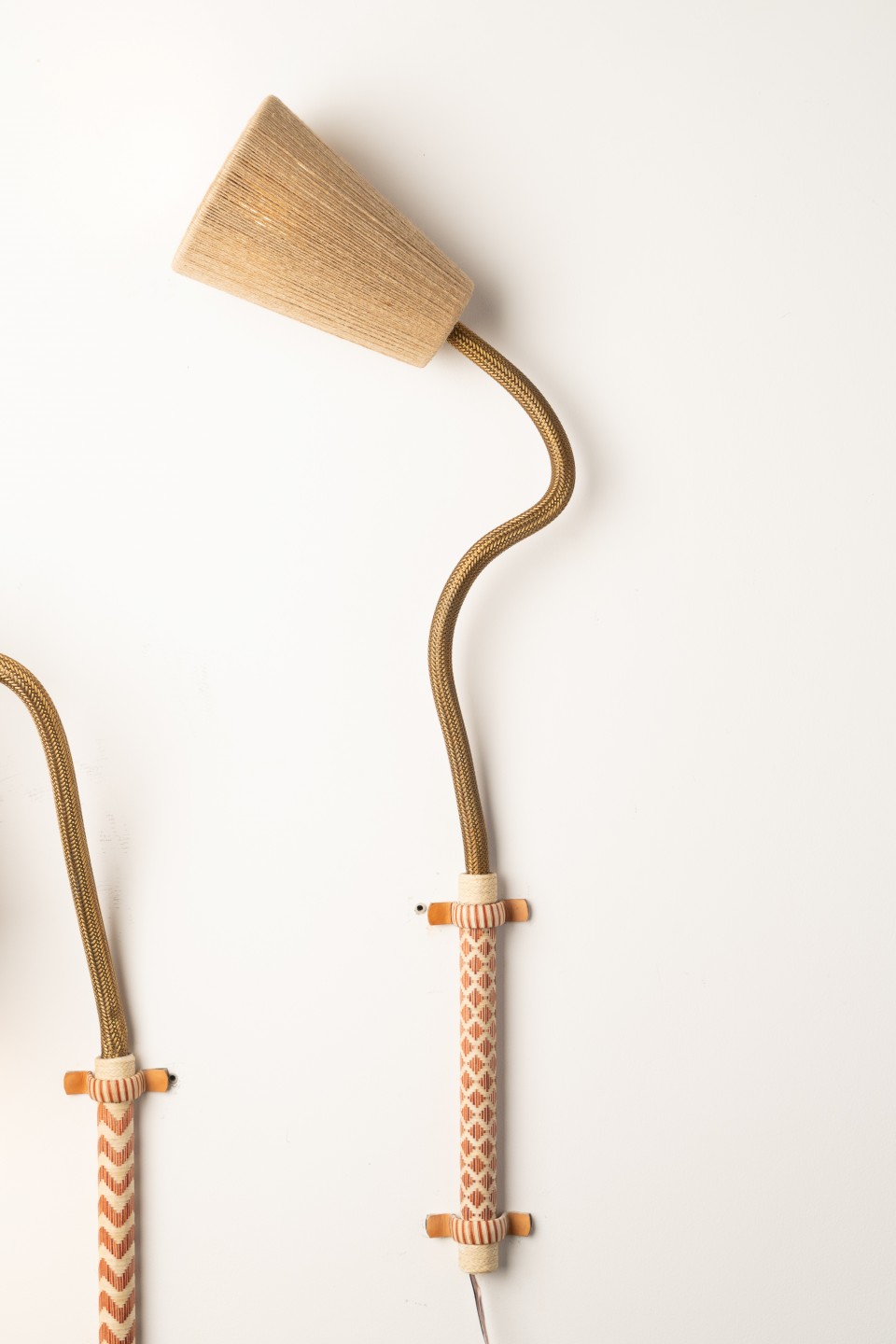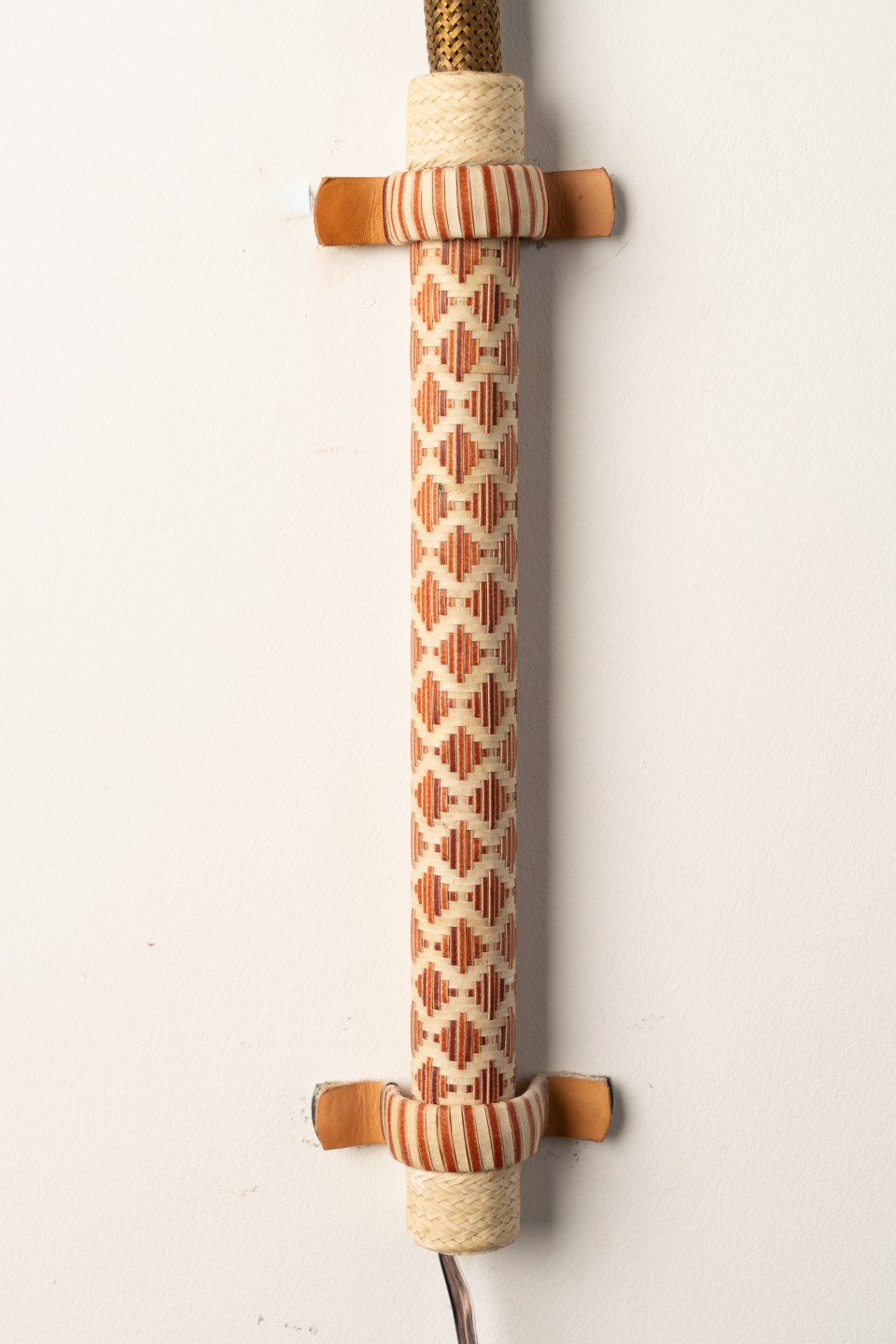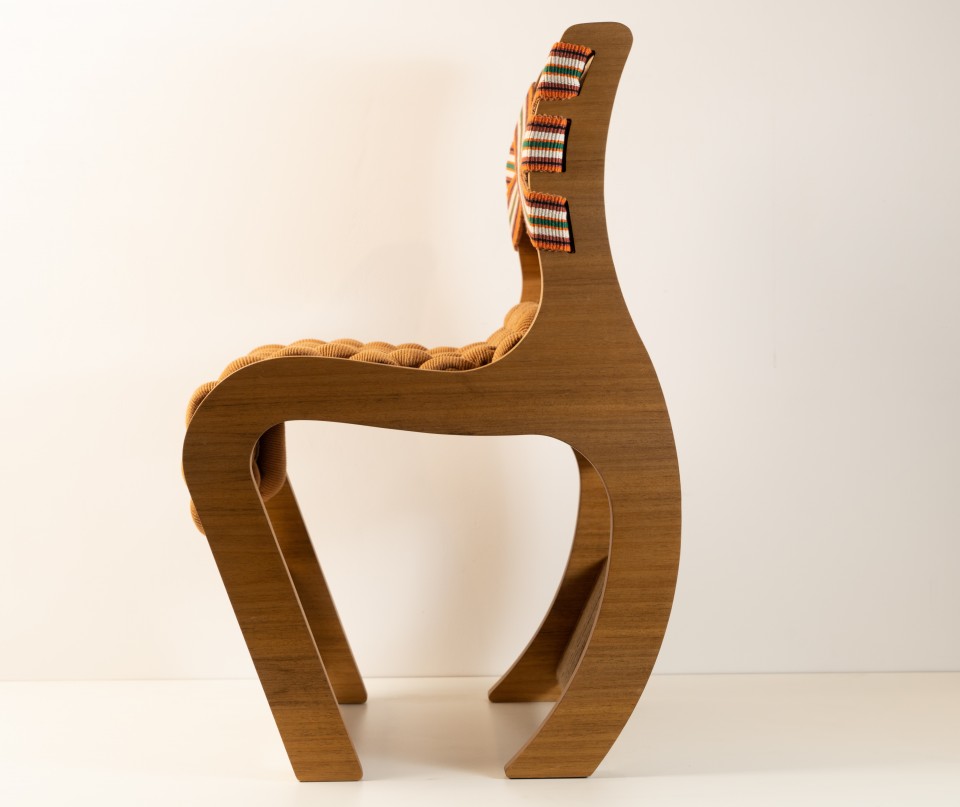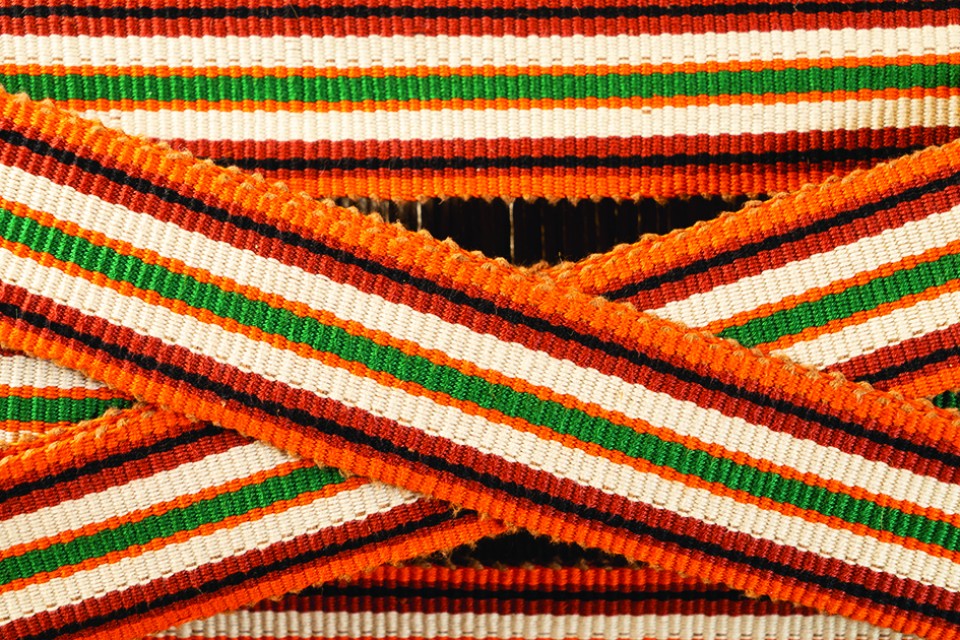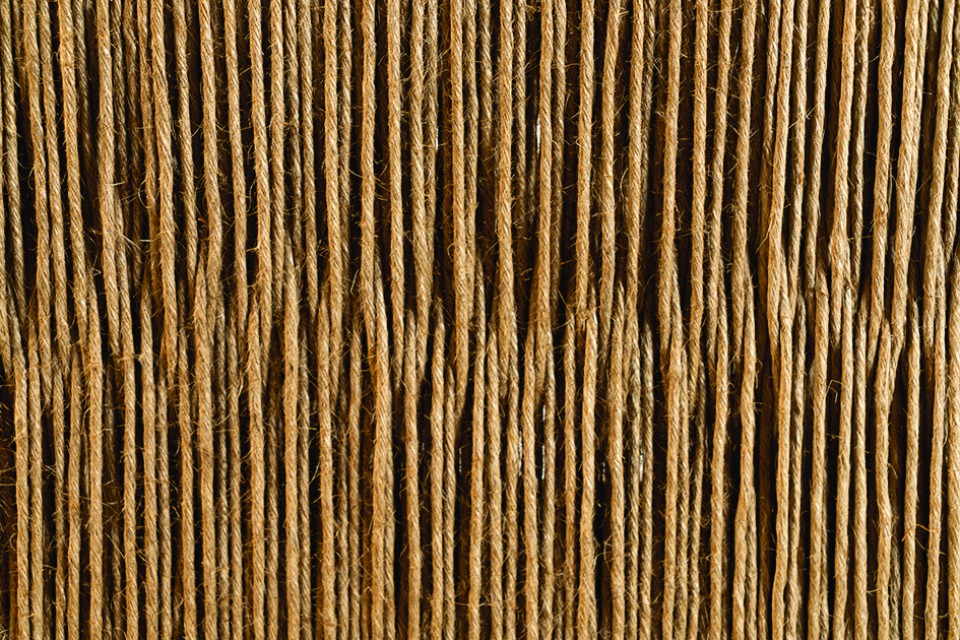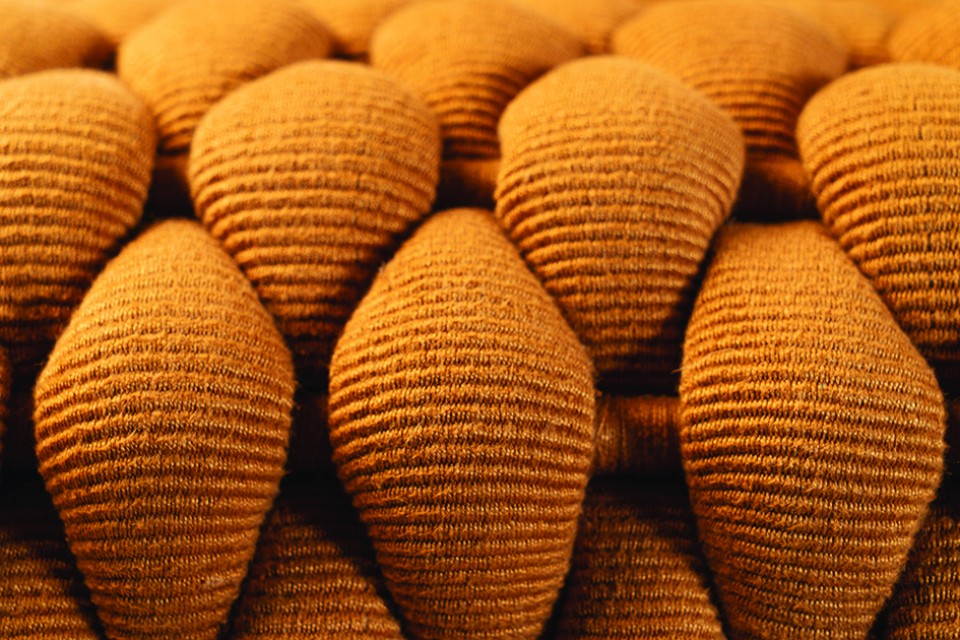You are here: SIAM 1838
Art+Design
5vie event
physical event
Info
SIAM 1838
Via Santa Marta, 18
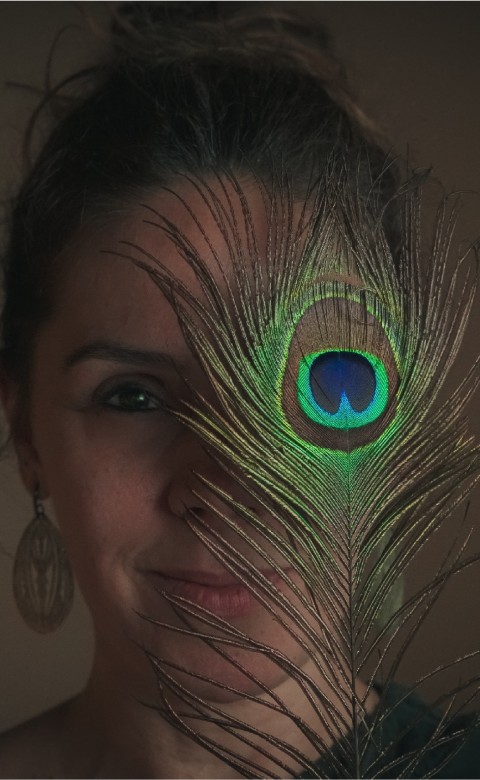
Collection of design objects created in dialogue with the ancestral techniques that make up the rich scenario of material and immaterial culture on the Matogrossense: saddlery pantaneira, weaving quilombola and woven guantò, as well as weaving paraguaia.
Mixing 'Root and Weft' com design instigates the double meaning, since the word 'Weft', in addition to referring to the action of weaving fibers or threads speaks of the plot, also means 'plot of history', enabling the attribution of meaning to objects produced elevated, in addition to function, the category of storytellers.
Elements, graphisms, techniques and processes that materialize the influence of these groups, both natives and immigrants that are part of the cultural mosaic that we find in the State of 'MS', and composes the Brazilianity of the central coast.
Getting to know its territories, listening to its occupations, origins and relationships, knowing its knowledge and manual affairs, weaving, plots and looms that take the protagonism of history, materialized in dozens of luminaries, suspended lamps, candelabras and the chair that makes up the collection, the result of extensive research carried out by Luciana Teixeira, architect and specialist in Furniture Design.
Ethnic Plot
The mixture of diff erent cultures is part of the history of the territory where Mato Grosso do Sul is located, in the Center-West region of Brazil, and handicrafts serve as an open field to express the complexities that define the Mato Grosso do Sul state. A raw material that can be found in most Brazilian regions, the vine is popularly known for being used to make baskets, brooms and sieves, in addition to furniture and household utensils.
In the Raiz da Trama project, this very Brazilian item is used in an innovative way in lamps that draw attention for their circular, square and rectangular shapes, featuring colorful prints that lightly decorate the sides of the object and mix sissal with cotton. All these elements gathered in the series of luminaires of the project make the connection with a melting pot” of identity influences which form this great cultural mosaic that is the State of Mato Grosso do Sul.
Dionísio Lampshade
The Dionísio lamp pays homage to the immigrant Dionísio Antônio Vieira, who came from the state of Minas Gerais with his family in 1890. He was a descendant of slaves and created the Furnas de Dionísio community which, unlike many other quilombos, was founded after the abolition of slavery.
Currently inhabited by 94 families, the Quilombo is located in the municipality of Jaraguari, Mato Grosso do Sul (MS), approximately 35 km from the capital Campo Grande.
Pantaneira Saddlery
The pieces from the traditional Pantanal saddlery are an invite to delve into the rural universe of Mato Grosso do Sul. They are cutouts, patchwork, braiding and wefts that indicate a research path with strong potential for a dialogue with design. The use of diff erent techniques in the Pantanal saddlery universe produces its own aesthetic character after reprocessing the rural culture so present in the Mato Grosso do Sul identity, which creates an identity connection with contemporaneity.
Leather braids and wefts are often used in the harness which the Pantanal natives use to saddle their horses. The proposal to insert them in fusion with objects of life, such as lighting fixtures, gives new meanings that go far beyond their everyday function in dealing with cattle entourages. The leather gains new colors, textures and contours in pieces named in honor of the words, expressions and slang words of the Pantanal culture, such as “vôte” and “vixi”, and the names of typical dishes of regional cuisine, such as the reinforced typical breakfast from Pantanal known as the “Quebra Torto”.
Paraguayan Loom
More than 50% of the cities of Mato Grosso do Sul are on the border with Paraguay and the state has the largest Paraguayan colony in Brazil, with more than 200 thousand Paraguayans and descendants. The influence of Paraguayan culture on the daily life of the entire population of Mato Grosso do Sul can be easily seen every day. The habit of drinking “tereré”, eating “chipa” and dancing a “polka” to the sound of a Paraguayan harp is ingrained in the habits of the people of MS. In terms of clothing, people from Mato Grosso do Sul also use the Paraguayan belt, later called the Pantanal belt.
By incorporating the traditional Paraguayan item into the design, in addition to its original function, which is to support the cervical spine of pedestrians who face long journeys on horseback, the Raiz da Trama project transforms this piece. It is loaded with stories, memories and landscapes. The Pagu Chair stands out, a tribute to the writer, journalist and political activist Patrícia Gouveia, the muse of the 1922 Antropophagical Movement.
Pagu Chair
The PAGU chair is the result of a fusion between 3 elements: The Pantosh Chair (2008), a famous design made from the Rio native duo “Lattoog”, the Fantastic Plastic Elastic Chair (1997), from the israeli Ron Arad and the branches from a dense tree.
The hybrid creative process, which proposes fusions or blends between fragments of specific symbols, seeks to transform them into a new and original object, and was developed by the Lattoog duo in their “Vira Latas” catalog. The catalog itself combines national and international classic design pieces, presenting very authentic and original furniture.
This is the concept used in the creative process of the so called PAGU Chair, named after the famous Brazilian journalist, writer and political activist Patrícia Gouveia, who made a name for herself during the 20’s and 30’s, being also a member of the “anthropophagical” movement led by Oswald de Andrade and Tarsila do Amaral.
The chair acquires brazilian characteristics, especially from the state of Mato Grosso do Sul, as it inserts the manual weaving from the typical Paraguayan “faixa” (as a belt, or strip) in the back and seat of the chair, and also through the ethnic weaving which composes the structure of the natural wood.

